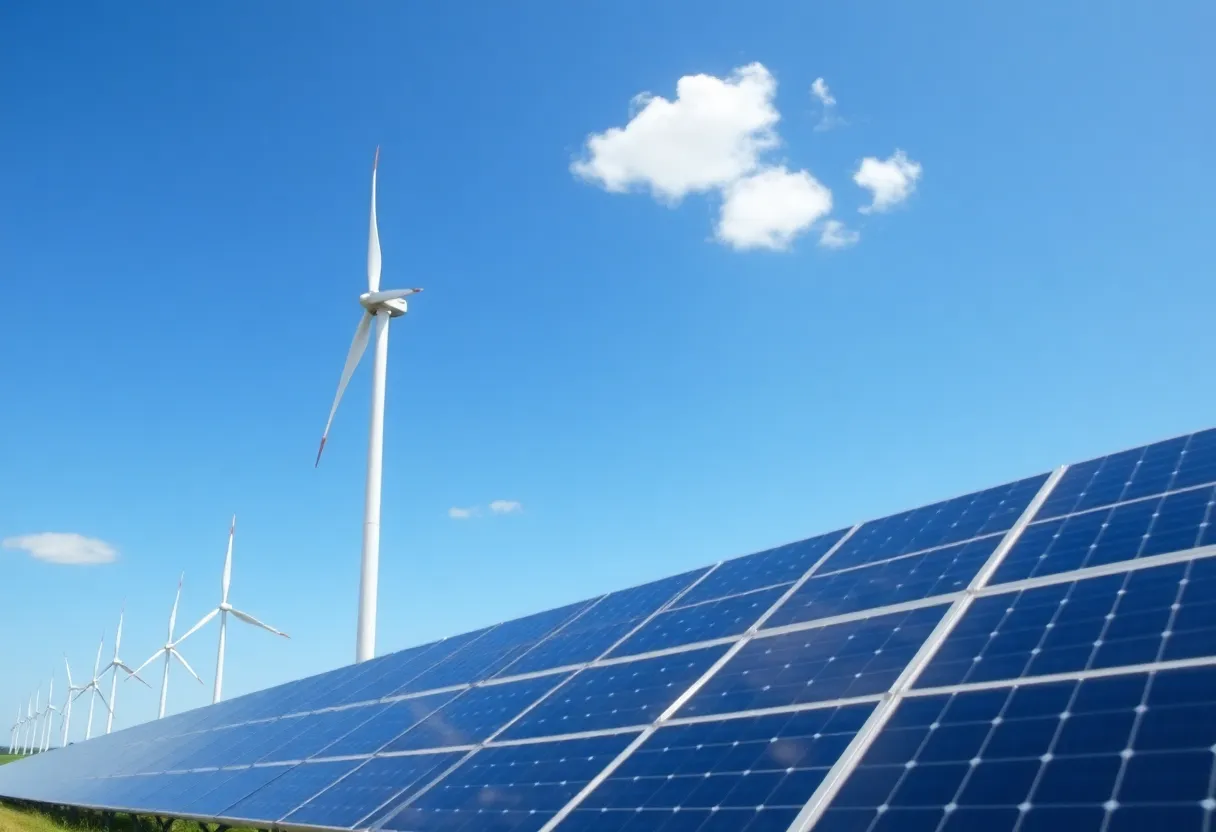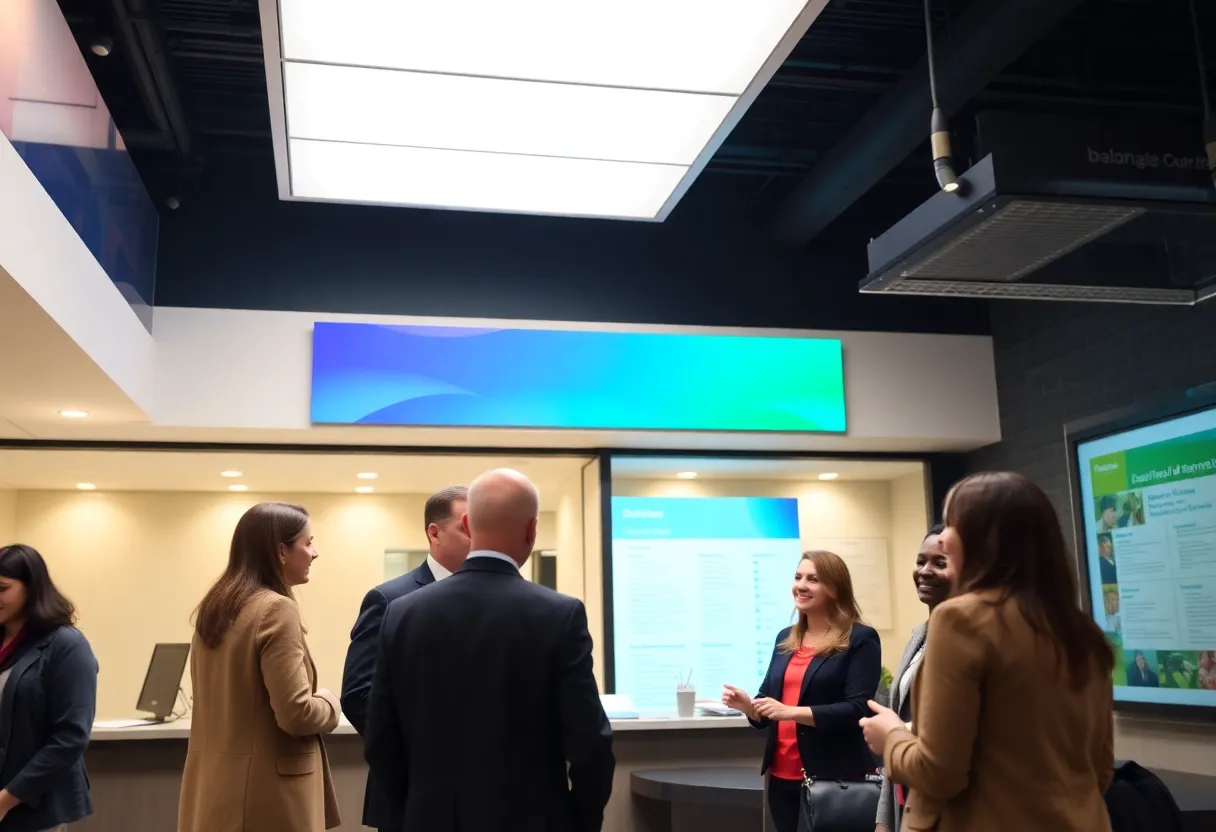Washington, D.C., August 19, 2025
News Summary
The IRS has released new guidelines for establishing the ‘beginning of construction’ for wind and solar projects, impacting eligibility for tax credits. The updated rules, following an Executive Order aimed at reducing reliance on foreign energy sources, limit the five percent safe harbor to small solar projects, while larger installations must adhere to a Physical Work Test. Developers of these larger projects must have begun construction under previous regulations by a set deadline. This update signifies stricter regulations for fostering domestic renewable energy initiatives.
Washington, D.C. – On August 15, 2025, the Internal Revenue Service (IRS) issued Notice 2025-42, which outlines updated requirements for the “beginning of construction” for wind and solar energy projects under Sections 45Y and 48E of the Internal Revenue Code. This guidance follows Executive Order 14315, signed on July 7, 2025, aimed at eliminating subsidies for foreign-controlled energy sources.
The new guidelines will take effect for renewable energy projects that have not started construction under previous regulations before September 2, 2025. The IRS largely retains the existing Physical Work Test, yet significantly narrows the five percent safe harbor application to small solar projects with a nameplate capacity of 1.5 megawatts (MW) or less. For larger wind and solar facilities, the previously available five percent safe harbor no longer applies; these projects must comply with the Physical Work Test requirements.
Developers of large projects wishing to utilize the five percent safe harbor must have initiated construction under the prior regulations before the September 2 deadline. The Physical Work Test includes essential physical activities necessary for project development, which can take place on-site or off-site. Examples of acceptable activities for wind and solar projects include excavation for turbine foundations for wind energy installations and assembling supporting structures for solar panels.
Additionally, the existing continuity requirement remains unchanged. This mandates that renewable energy projects must be operational by the end of the calendar year that is four years following the commencement of construction. The recent IRS notice does not clarify the applicability of the beginning of construction standard under the new Foreign Entities of Concern (FEOC) framework and suggests that further guidance will be forthcoming.
According to provisions under the One Big Beautiful Bill Act (OBBBA), wind and solar facilities are required to begin construction before July 5, 2026, or become operational by December 31, 2027, to qualify for tax credits. This new notice aims to clarify eligibility for the Section 45Y clean electricity production credit and Section 48E clean electricity investment credit.
Previous IRS guidance on the criteria for the beginning of construction includes Notices 2013-29 and 2018-59. The latest updates signify a movement towards more stringent regulations, aimed at ensuring domestic projects comply with U.S. energy foreign policy.
Key Updates in Notice 2025-42
- The five percent safe harbor is only applicable to small solar projects (≤1.5 MW).
- Large wind and solar projects must adhere to the Physical Work Test.
- Construction must begin for larger projects under previous regulations by September 2, 2025, to qualify for tax incentives.
- Physical work can include digging foundations or building structures, depending on project type.
- Continuity rules remain in effect, requiring operations to commence within four years of starting construction.
Conclusion
The IRS’s Notice 2025-42 marks an important shift in how construction timelines for renewable energy projects are regulated, emphasizing the government’s intent to foster American energy independence while tightening regulations on foreign entities. Developers should familiarize themselves with the updated rules to ensure compliance and secure potential tax benefits.
FAQ Section
What is Notice 2025-42?
Notice 2025-42 is a guidance document issued by the IRS that outlines new “beginning of construction” requirements for wind and solar facilities under certain sections of the Internal Revenue Code.
What are the key changes in Notice 2025-42?
The key changes include limiting the five percent safe harbor to small solar projects, requiring larger projects to satisfy the Physical Work Test, and maintaining previously set continuity rules for project completion.
When does this guidance take effect?
This notice takes effect for projects that do not begin construction under earlier guidance by September 2, 2025.
What is the Physical Work Test?
The Physical Work Test requires that significant physical work is conducted as a prerequisite for claiming tax credits associated with renewable energy projects. This can include site preparation or construction activities.
What must developers do to qualify for tax credits?
Developers of large projects must have started construction under the previous guidance prior to September 2, 2025, or ensure their projects are operational by specified deadlines according to the One Big Beautiful Bill Act.
Key Features of Notice 2025-42
| Feature | Description |
|---|---|
| Effective Date | September 2, 2025, for projects not under prior guidance. |
| Small Solar Projects | Five percent safe harbor applies to projects ≤1.5 MW. |
| Large Projects | Must comply with Physical Work Test; safe harbor not applicable. |
| Continuity Requirement | Projects must be operational within four years of construction start. |
| Future Guidance | Further IRS guidance pending on FEOC Equipment Rule standards. |
Deeper Dive: News & Info About This Topic
HERE Resources
New IRS Guidance Tightens Wind and Solar Tax Credits
How to Make the Most of Your Philadelphia Home Renovation: Local Tips and Resources
How to Choose the Right Home Builder in Philadelphia: Key Factors to Consider
GE Vernova Invests $75 Million in Pennsylvania Grid Solutions
Talen Energy Partners with Amazon for Carbon-Free Nuclear Power
Pennsylvania Governor Raises Alarm Over Clean Energy Tax Credit Cuts
Pennsylvania Schools Face Solar Program Funding Shortage
Additional Resources
- OurQuadCities: IRS to Keep Wind, Solar Companies from Tax Breaks
- RTO Insider: IRS Guidance on Wind and Solar Credits
- New York Times: IRS Wind, Solar Tax Credits
- PwC: IRS Sheds Light on Construction Rules for Wind and Solar Credits
- Wikipedia: Renewable Energy in the United States
Author: STAFF HERE PHILADELPHIA WRITER
The PHILADELPHIA STAFF WRITER represents the experienced team at HEREPhiladelphia.com, your go-to source for actionable local news and information in Philadelphia, Philadelphia County, and beyond. Specializing in "news you can use," we cover essential topics like product reviews for personal and business needs, local business directories, politics, real estate trends, neighborhood insights, and state news affecting the area—with deep expertise drawn from years of dedicated reporting and strong community input, including local press releases and business updates. We deliver top reporting on high-value events such as Mummers Parade, Philadelphia Flower Show, and Thanksgiving Day Parade. Our coverage extends to key organizations like the Greater Philadelphia Chamber of Commerce and United Way of Greater Philadelphia, plus leading businesses in telecommunications, food services, and healthcare that power the local economy such as Comcast, Aramark, and Children's Hospital of Philadelphia. As part of the broader HERE network, we provide comprehensive, credible insights into Pennsylvania's dynamic landscape.





